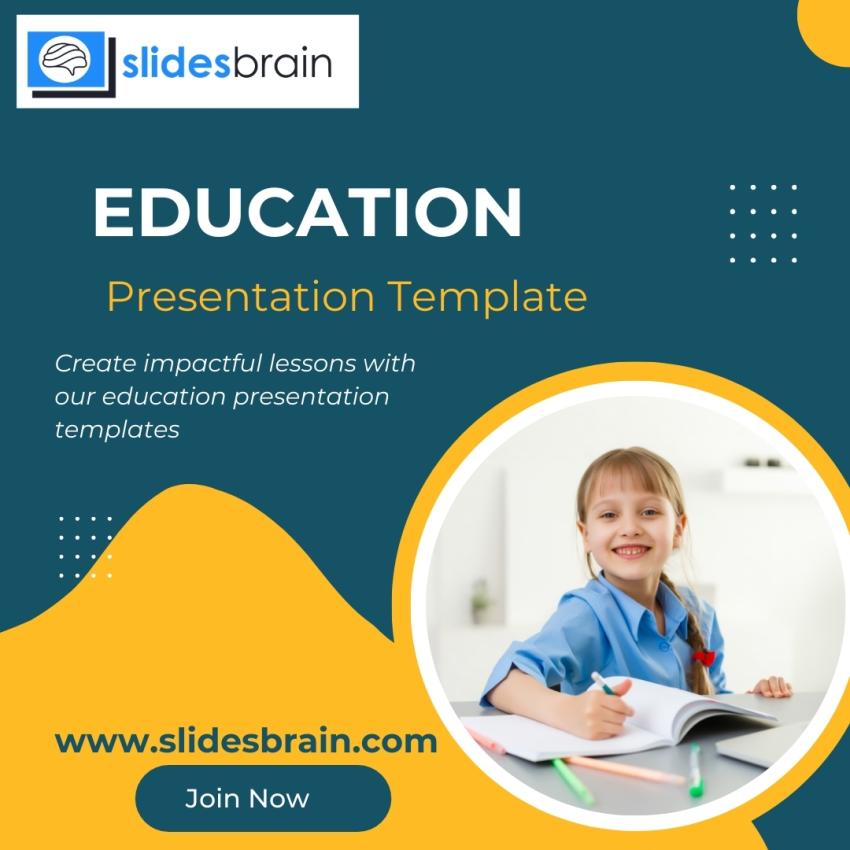
The days when slides were used only in boardrooms are long gone. In today’s classrooms—whether physical or virtual—visually engaging presentations have become a key part of how teachers teach and students learn. A well-designed presentation can make a lesson more interactive, engaging, and easier to understand. Whether you're a teacher delivering a lecture or a student working on a project, education presentation templates can make your job a lot easier and your work a lot more impactful.
What Are Education Presentation Templates?
Education presentation templates are pre-designed slide decks created specifically for classroom or academic use. They usually come with built-in layouts for sections like introductions, objectives, topic overviews, charts, visuals, and summaries. These templates are designed to be clear, easy to use, and adaptable across different age groups—from young students to college-level learners.
Most of these templates are compatible with tools like PowerPoint, Google Slides, or Keynote. That means you can easily edit them on the platform you’re most comfortable with. Instead of worrying about formatting and layout, you can focus on what really matters: your content. The result? Presentations that are more organized, visually appealing, and easier for the audience to follow.
Why They’re So Useful in Today’s Classrooms
Classrooms today rely heavily on digital tools. Whether it’s remote learning or a smartboard in a traditional classroom, visual materials are playing a bigger role than ever. Education presentation templates help fill this need by providing ready-made designs that make lessons more dynamic and engaging.
For teachers, the biggest benefit is saving time. Instead of creating a new presentation from scratch for each lesson, you can start with a template and plug in your content. This not only speeds up preparation but also allows teachers to focus more on interacting with students rather than worrying about formatting slides.
Students also benefit. Many struggle with organizing their ideas when asked to make a presentation. Using a template gives them a clear structure to follow, which builds confidence and improves the overall quality of their work.
Different Templates for Different Subjects
Not all education templates are created equal. The best ones are tailored to fit specific subjects and learning levels.
Science templates often include sections for experiments, observations, and results.
Math templates usually focus on step-by-step solutions, formulas, and visual representations of problems.
History and literature templates might feature timelines, character breakdowns, or narrative structures.
Templates for younger kids often use bright colors, large fonts, and playful graphics to make learning fun and less intimidating. On the other hand, high school and college-level templates are typically more minimalist, focusing on clarity and professionalism.
There are also templates specifically designed for remote learning. These are optimized for screen viewing and often include space for video embeds, clickable links, and other interactive features.
Key Benefits of Using Education Presentation Templates
1. Boosts Engagement
A well-structured and visually clear presentation grabs students’ attention. Instead of zoning out, students are more likely to stay focused and absorb what’s being taught.
2. Improves Understanding and Retention
Presenting information in a clean, visual format helps students process it better. Complex concepts become easier to grasp when supported by diagrams, flowcharts, or simple visuals.
3. Saves Valuable Time
For teachers, templates reduce the hours spent on formatting and layout. With a solid foundation already built in, you can simply customize it to fit your lesson plan or topic.
4. Promotes Consistency
Using the same design format for each lesson creates a sense of continuity. Students become familiar with the structure, which helps them anticipate how information will be delivered and organized.
5. Enhances Student Presentations
Templates aren’t just for teachers—students benefit too. They can use templates to structure group projects or individual reports, making their presentations clearer, more professional, and easier to follow.
Making the Most of Your Template
While templates provide the foundation, your customization will bring them to life. It’s important to choose a template that matches the topic of your presentation. For instance, a biology lesson could use earth-toned backgrounds and nature imagery, while a tech topic might go better with clean lines and modern icons.
Keep your content concise. Use short phrases or bullet points rather than long paragraphs. Stick to one idea per slide so the message stays clear and focused. Also, make sure your visuals are relevant—diagrams, graphs, and illustrations should support your points rather than distract from them.
Try not to overuse transitions or animations. They might seem fun, but too many can actually make your presentation harder to follow.
Lastly, practice your presentation with your slides. Even the best-designed deck can fall flat if you’re unsure of the flow or how to explain each part.
What’s Next: Trends in Educational Presentations
The use of education presentation templates is only going to increase. As schools adopt more tech and hybrid learning environments, templates are evolving to include features like interactive elements, real-time collaboration tools, and seamless integration with online learning platforms.
Designs are also shifting toward minimalism. The focus is now on clean layouts, easy-to-read text, and visuals that add value. Templates that cater to visual learners—using icons, infographics, and charts—are gaining popularity.
New tools driven by artificial intelligence are beginning to change how we create presentations altogether. Some platforms now offer AI-generated slide suggestions or even build entire presentations based on your text input, making it even faster to go from idea to final product.
Final Thoughts
Education presentation templates are more than just a design tool—they’re a practical way to improve teaching and learning. They help you present information clearly, keep your audience engaged, and save time during preparation. Whether you're an educator planning weekly lessons or a student putting together a class project, these templates can make a real difference.
As digital learning continues to grow, the role of visuals and structure in education will only become more important. Using templates isn’t just a nice extra—it’s becoming a standard for effective communication in classrooms everywhere.



